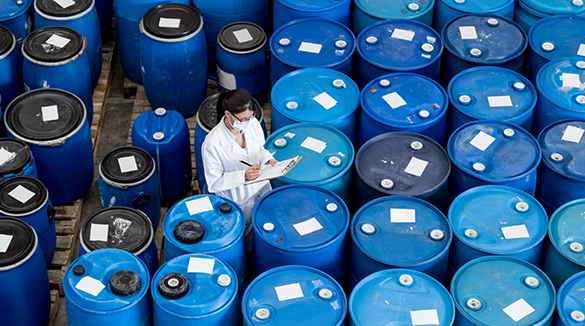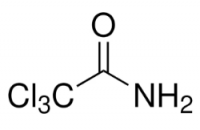Resources & Solutions

Product Manager
- Phone:+86 (0)21 6536 5235
- Contact: Send E-Mail
Trichloroacetamide
| Structure Formula |  |
|---|---|
| Formula | C2H2Cl3NO |
| Molecular Weight | 162.40 |
| CAS No. | 594-65-0 |
| EC No. | 209-849-3 |
| Synonyms | 2,2,2-Chloroacetamide; 2,2,2-trichloro-acetamid; Acetamide, alpha-trichloro- alpha,alpha,alpha-Trichloroacetamide; alpha-trichloro-acetamid; Amid kyseliny trichloroctove; amidkyselinytrichloroctove; 2,2,2-Trichloroacetamide; Trichloroacetaldoxime; Acetamide, 2,2,2-trichloro- chloraloxime; alpha-trichloro-acetamide |
Trichloroacetamide, molecular formula C2H2Cl3NO, appearance as a white crystal or powder. Melting point 139-143 °C, boiling point 238-240C, density 1.4985 (rough estimate), refractive index 1.5450 (estimate), flash point 238-240°C. Soluble in 10 times the volume of water and ethanol, slightly soluble in ether. Irritating and corrosive.
2,2, 2-trichloroacetamide is a derivative of acetamide in which chlorine atoms replace three hydrogen atoms on nitrogen atoms, and is also known in the industry as 2,2,2-Chloroacetamide.
Trichloroacetamide and its derivatives are widely used in chemical, pesticide, medicine and other industries, used as raw materials for organic synthesis of various nitrogenous compounds and and pharmaceutical intermediates, as well as raw materials for synthesis of chloroacetonitrile, sulfanilamide – 3-methoxypyrazine, sulfanilamide methylpyrazine and other organic compounds; In the pharmaceutical industry, trichloroacetamide is mainly used in the synthesis of long-acting sulfonamide B (SMPZ) and phentolamine. It is used to produce the buffer ADA[N- (Carbamoylmethyl) iminodiacetic acid].
In addition, the antimicrobial properties of Trichloroacetamide help control the growth of microorganisms and are therefore used as a fungicide in water treatment processes.
Production Process:
The production process of trichloroacetamide is obtained by the reaction of ethyl chloroacetate with ammonia.
First, the ethyl chloroacetate was cooled to below 10℃, and then slowly added with ammonia (relative density 0.9) under agitation to immediately precipitate white crystals. After adding the ammonia, continue to stir for 1 hour, filter out the crystals, then wash the ammonium chloride with ammonia water, and then drain as much as possible to form crude products, and then recrystallize with ethanol to obtain the finished products.
Check out our new product 2,6-Dimethoxyphenol
Under proper storage conditions, the shelf life is 24 months
For more details and safety recommendations regarding the use of the product, please consult our Material Safety Data Sheet (MSDS), or Contact With our Product Manager.



